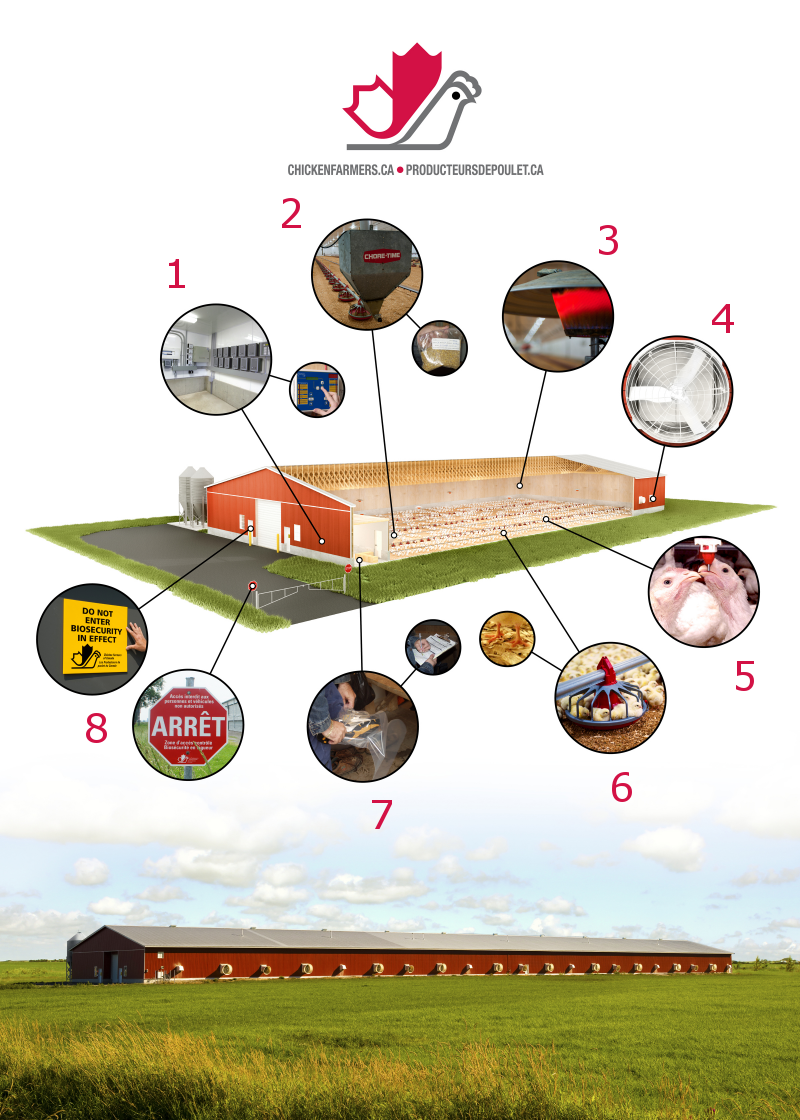Safe Chicken
What’s in a barn?

- Heating, ventilation, humidity and other environmental levels are verified constantly using several monitors such as these to ensure that the birds are comfortable and stress-free.
- Feed and water lines are cleaned before the chicks are placed, and are monitored daily thereafter. While the feed the birds are given is optimized for their ages, the main ingredient of all chicken feed (over 85%) is grains and grain by-products, protein-producing seeds, and meal made from them such as canola or soybean meal.
- While the temperature is adjusted as the chickens grow, the “brooding” temperature is kept high (28°C–32°C), using heat lamps like these, to make the barn more welcoming to the birds.
- Several large fans on the end or side of the building help circulate the air in climate-controlled barns.
- As the birds grow, the feed and water lines are raised, either by hand with a crank or with pulleys, so that the birds always have easy, comfortable access.
- The barn is completely cleaned between flocks and fresh litter is put down for the birds to roam on.
- Farmers follow a national on-farm food safety program that emphasizes health, cleanliness and safety throughout each step of the production cycle, and follow strict biosecurity measures to protect animal health and prevent flock infections from outside sources. Here a farmer pulls on boot covers before entering the barn and fills out his flock sheet; data from the grow-out period is recorded on the flock sheet which accompanies the flock all the way to the processing plant.
- Raised by a Canadian Farmer On Farm Food Safety Program has strict guidelines and requirements for restricting access to the birds by humans, pests and rodents. Signs remind you of such as you pull up to the barn and prepare to enter it.



 Français
Français


